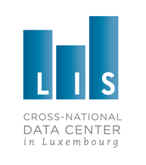|
LIS
standardized levels
The
levels are expressed in low, medium, high, and correspond to ISCED97 in
the following manner :
|
1. LOW, including
|
ISCED levels 1 and 2 |
| |
no
education |
0 |
| |
pre-primary |
0 |
| |
primary |
1 |
| |
lower
secondary education |
2A |
| |
compulsory education |
2A |
| |
initial vocational education |
2B, 2C |
2. MEDIUM, including
|
ISCED levels 3 and 4 |
| |
upper
secondary general education |
3A |
| |
basic
vocational education |
3B, 3C |
| |
secondary vocational education |
4B, 4C |
| |
post-secondary education
(including either shorter vocational courses
or programs preparing for courses on tertiary level) |
4A |
3. HIGH, including
|
ISCED levels 5 and 6 |
| |
specialized vocational education |
5B |
| |
university/college education |
5A |
| |
(post)-doctorate and equivalent degrees |
6 |
9. All else, including
|
|
| |
missing |
|
| |
unknown |
|
| |
level undefined |
|
| |
other school degree |
|
| |
not asked |
|
| |
still in school |
|
| |
These vague labels are kept in a separate
category to keep the true levels free from 'pollution' |
Recoding
The recoding was done
using the variables PEDUC or PTOCC or both, depending on availability.
The ISCED97 manual served as the main guide for all OECD countries. For
other countries, the LIS contact person was consulted. In addition, we
made use of several (web)-documents to guarantee the recoding to be as
comparable as possible.
LIS
tried to derive the standardized variable for as many datasets as
possible.
However, it will be clear that standardization may fail for several
reasons. For instance, when the survey did not collect levels of
education, but 'years in education', or 'age when leaving full-time
education', standardization could not be carried out.
A
problem that we regularly faced is when original categories contain a
mix of educational levels. If a value of PEDUC could correspond to, say
both ISCED levels 2 and 3 and therefore both to low and medium, the
enrolment figures from ISCED were used to see if the vast majority could
be assigned to either of the two.
As a
rule, successful recoding only resulted in clear situations. In other
words: we did not allow ourselves any guessing.
The
details on the recode are available per dataset, either giving the
concordance table, or explaining why the recode was not carried out.
For
those datasets where no recoding is made available, LIS users may of
course feel free to use their own judgment and pursue a recode at their
own responsibility.
References
Classifying Educational Programs, Manual for
ISCED 97, Implementation
in OECD Countries 1999 Edition. Paris: UNESCO.
Education at a Glance: OECD Indicators, 2005 Edition , Paris:
OECD.
UNESCO, World Education Forum, Education for all , Paris, UNESCO
Link to UNESCO ISCED97 classification :
http://www.unesco.org/education/information/nfsunesco/doc/isced_1997.htm
|


